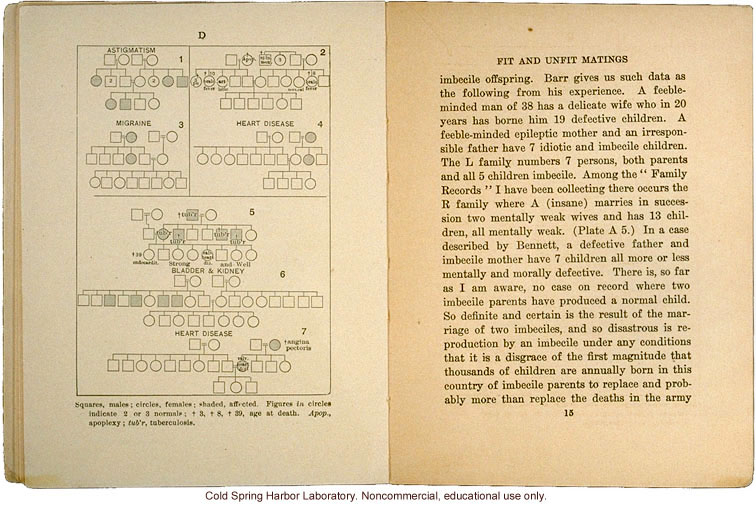[left side]
D
[pedigree chart]
Square, males; circles, females; shaded, affected. Figures in circles indicate 2 or 3 normals; [dagger symbol] 3, [dagger symbol] 8, [dagger symbol] 39, age at death. Apop., apoplexy; tub'r, tuberculosis.
[right side]
Fit and Unfit Matings
imbecile offspring. Barr gives us such data as the following from his experience. A feeble-minded man of 38 has a delicate wife who in 20 years has borne him 19 defective children. A feeble-minded epileptic mother and an irresponsible father have 7 idiotic and imbecile children. The L family numbers 7 persons, both parents and all 5 children imbecile. Among the "Family Records" I have been collecting there occurs the R family where A (insane) marries in succession two mentally weak wives and has 13 children, all mentally weak. (Plate A 5.) In a case described by Bennett, a defective father and imbecile mother have 7 children all more or less mentally and morally defective. There is, so far as I am aware, no case on record where two imbecile parents have produced a normal child. So definite and certain is the result of the marriage of two imbeciles, and so disastrous is reproduction by an imbecile under any conditions that it is a disgrace of the first magnitude that thousands of children are annually born in this country of imbecile parents to replace and probably more than replace the deaths in the army
15
[end]


